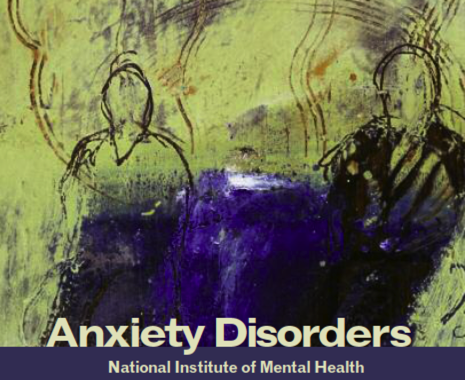Anxiety Disorders | Panic Attacks - understanding

AnxietyDisorders affect about 40 millionAmerican adults age 18 years and older (about 18%) in a given year, causing them to be filled with fearfulness and uncertainty. 
Unlike the relatively mild, brief anxiety caused by a stressful event (such as speaking in public or a first date), anxiety disorders last at least 6 months and can get worse if they are not treated.
Anxiety disorders commonly occur along with other mental or physical illnesses, including alcohol or substance abuse, which may mask anxiety symptoms or make them worse. In some cases, these other illnesses need to be treated
Effective therapies for anxiety disorders are available, and research is uncovering new treatments that can help most people with anxiety disorders lead productive, fulfilling lives. If you think you have an anxiety disorder, you should seek information and treatment right away.
Here we will look at Panic Attacks:
Again, seeking professional help leads to proper diagnosis and improved treatment outcomes. The information presented here is from the National Institute of Mental Health.
Each anxiety disorder has different symptoms, but all the symptoms cluster around excessive, irrational fear and dread.
Panic Attacks: A real illness, not to be ignored.
“For me, a panic attack is almost a violent experience. I feel disconnected from reality. I feel like I'm losing control in a very extreme way. My heart pounds really hard, I feel like I can’t get my breath, and there’s an overwhelming feeling that things are crashing in on me.”
“It started 10 years ago, when I had just graduated from college and started a new job. I was sitting in a business seminar in a hotel and this thing came out of the blue. I felt like I was dying.”
“In between attacks, there is this dread and anxiety that it’s going to happen again. I’m afraid to go back to places where I’ve had an attack. Unless I get help, there soon won’t be anyplace where I can go and feel safe from panic.”
Panic disorder is a real illness that can be successfully treated. It is characterized by sudden attacks of terror, usually accompanied by a pounding heart, sweatiness, weakness, faintness, or dizziness. During these attacks, people with panic disorder may flush or feel chilled; their hands may tingle or feel numb; and they may experience nausea, chest pain, or smothering sensations. Panic attacks usually produce a sense of unreality, a fear of impending doom, or a fear of losing control.
A fear of one’s own unexplained physical symptoms is also a symptom of panic disorder.
People having panic attacks sometimes believe they are having heart attacks, losing their minds, or on the verge of death.They can’t predict when or where an attack will occur, and between episodes many worry intensely and dread the next attack.
Panic attacks can occur at any time, even during sleep. An attack usually peaks within 10 minutes, but some symptoms may last much longer.
Panic disorder affects about 6 million American adults1 and is twice as common in women as men.2 Panic attacks often begin in late adolescence or early adulthood,2 but not everyone who experiences panic attacks will develop panic disorder. Many people have just one attack and never have another.The tendency to develop panic attacks appears to be inherited.3
People who have full blown, repeated panic attacks can become very disabled by their condition and should seek treatment before they start to avoid places or situations where panic attacks have occurred. For example, if a panic attack happened in an elevator, someone with panic disorder may develop a fear of elevators that could affect the choice of a job or an apartment, and restrict where that person can seek medical attention or enjoy entertainment.
Some people’s lives become so restricted that they avoid normal activities, such as grocery shopping or driving. About one third become housebound or are able to confront a feared situation only when accompanied by a spouse or other trusted person.
When the condition progresses this far, it is called agoraphobia, or fear of open spaces.
Early treatment can often prevent agoraphobia, but people with panic disorder may sometimes go from doctor to doctor for years and visit the emergency room repeatedly before someone correctly diagnoses their condition.
This is unfortunate, because panic disorder is one of the most treatable of all the anxiety disorders, responding inmost cases to certain kinds of medication or certain kinds of cognitive psychotherapy, which help change thinking patterns that lead to fear and anxiety.

Panic disorder is often accompanied by other serious problems, such as depression, drug abuse, or alcoholism. These conditions need to be treated separately. Symptoms of depression include feelings of sadness or hopelessness, changes in appetite or sleep patterns, low energy, and difficulty concentrating.
Most people with depression can be effectively treated with antidepressant medications, certain types of psychotherapy, or a combination of the two.
